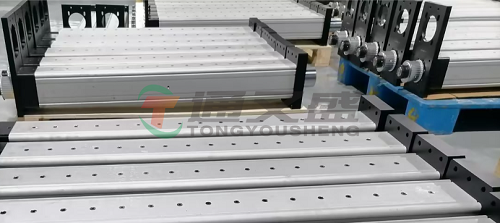Electric cylinders, as efficient linear actuators, are widely used in modern industries and automation fields.
Compared to traditional pneumatic and hydraulic cylinders, electric cylinders offer higher precision, efficiency, and reliability, along with flexible control options to adapt to various complex applications. This article will delve into the main functions of electric cylinders and their applications in different sectors.
The primary function of an electric cylinder is to provide precise linear motion.
By integrating with power sources like servo motors, stepper motors, or DC motors, electric cylinders can accurately control the speed, position, and acceleration of movement.
The precise linear motion control makes them essential components in automated production lines, CNC machines, and other fields. In these applications, electric cylinders are used to perform accurate positioning, pushing and pulling tasks, or other complex linear movements.
Many high-precision electric cylinders are designed with high load capacity in mind.
Unlike pneumatic and hydraulic cylinders, the load capacity of electric cylinders depends not only on the motor’s power but also on the internal transmission system (such as ball screws or gear systems).

This enables electric cylinders to maintain high precision even when bearing heavy loads, making them widely used in scenarios requiring high thrust and precision, such as robotic arms, precision assembly lines, and automation equipment.
Another key function of electric cylinders is their high-speed response capability. By precisely controlling the motor's output, electric cylinders can quickly adjust their position or switch movement in a very short time.
Additionally, electric cylinders possess dynamic adjustment capabilities, automatically adjusting parameters based on real-time load and speed requirements to adapt to different operating conditions.
This feature makes electric cylinders particularly advantageous in applications that demand high-speed responses, such as fast handling systems, packaging equipment, and medical devices.